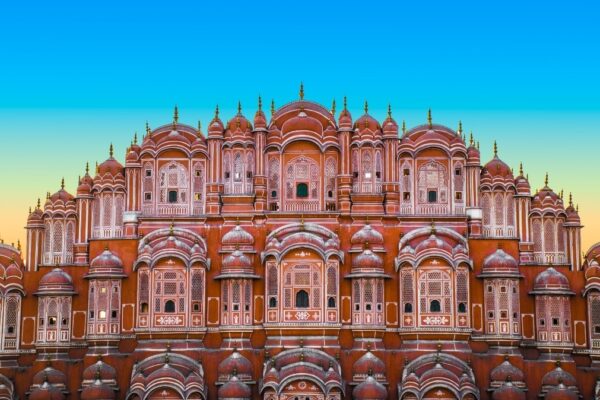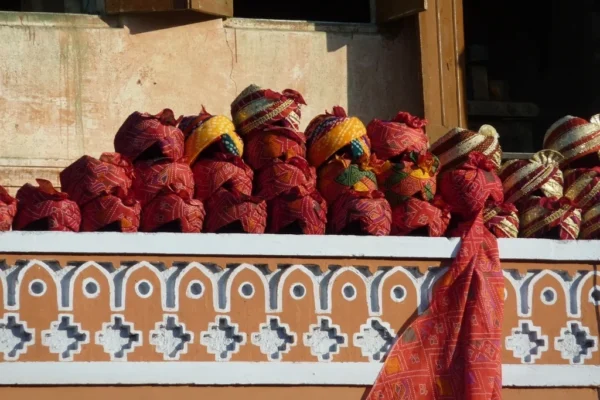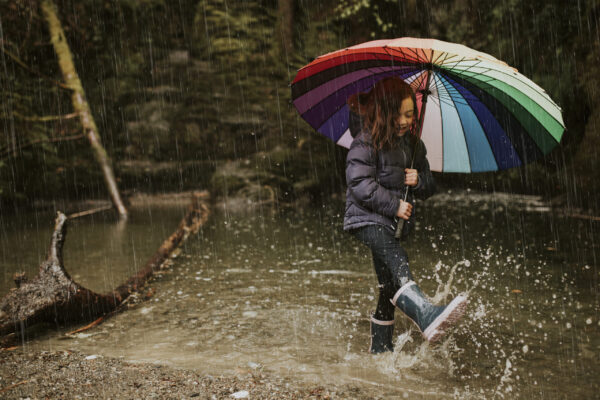Rajasthan, renowned for its royal heritage and historical monuments, becomes even more captivating during the monsoon season. The rain breathes new life into its heritage sites, making them a must-visit during this time. Whether you’re staying at a hotel in Rajasthan or a resort in Rajasthan, the monsoon offers a unique perspective on its historical treasures.
Major Heritage Sites
Amber Fort:
Located in Jaipur, Amber Fort is a majestic structure that looks even more stunning against the backdrop of rain-washed surroundings and lush greenery. The fort’s reflection in the Maota Lake, especially during the monsoon, creates a mesmerizing view. Walking through its grand halls and courtyards, you can almost feel the whispers of history echoing through the walls.
City Palace, Udaipur:
Overlooking Lake Pichola, the City Palace in Udaipur offers breathtaking views, particularly during the monsoon. The palace’s intricate architecture, combined with the lake’s serene waters and the verdant landscape, provides a picturesque setting. The monsoon season adds a fresh and vibrant touch to the palace grounds, enhancing its beauty.
Mehrangarh Fort:
Situated in Jodhpur, Mehrangarh Fort stands tall and majestic, offering panoramic views of the city. During the monsoon, the fort’s towering walls and expansive courtyards are surrounded by lush greenery, making the fort appear even more imposing and beautiful. The cooler climate also makes it an ideal time to explore this historical marvel without the scorching heat.
Impact of Monsoon on Historical Places
Enhanced Beauty:
The rains bring out the colors of the historical buildings, making them look more vibrant and alive. The wet stones and freshly washed facades of the monuments shine under the cloudy skies, creating a perfect setting for photography enthusiasts.
Lush Surroundings:
The gardens and courtyards of these heritage sites turn green and lively during the monsoon. The otherwise arid landscapes of Rajasthan transform into a lush paradise, offering a refreshing sight for visitors.
Cooler Climate:
The monsoon brings a much-needed respite from the intense summer heat of Rajasthan. The cooler temperatures make it more comfortable to explore the heritage sites, allowing you to enjoy your visit without the discomfort of extreme heat.
Best Times to Visit
Early Morning:
Visiting these heritage sites in the early morning offers a peaceful and less crowded experience. The fresh morning air and the soft light enhance the beauty of the surroundings, providing a serene start to your day.
Late Afternoon:
The late afternoon, with its soft light and cooler temperatures, is another perfect time to visit. The golden hour light adds a magical touch to the monuments, making them look even more enchanting.
Avoid Peak Rainfall:
While the monsoon adds charm to the heritage sites, it’s best to check the weather forecast and plan your visit during lighter rains. This ensures that you can enjoy the outdoor areas without being caught in heavy downpours.
Conclusion
Experiencing the heritage sites of Rajasthan during the monsoon is a unique and enriching experience. The rains bring out the best in these historical places, adding a fresh and vibrant touch to their already magnificent beauty. Whether you’re exploring the grand Amber Fort, the picturesque City Palace in Udaipur, or the imposing Mehrangarh Fort in Jodhpur, the monsoon season offers a perfect backdrop for your visit. Staying at a hotel in Rajasthan or a resort in Rajasthan will ensure you have a comfortable and memorable experience as you delve into the rich history and culture of this royal state. So, pack your bags, embrace the rain, and set out on a journey to discover the monsoon magic of Rajasthan’s heritage sites.




